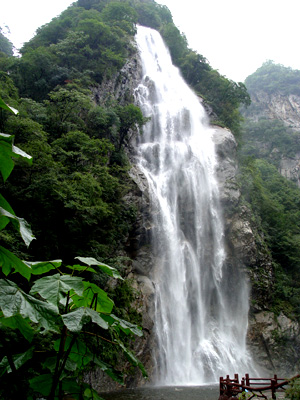 |
After 3-days touring around Xi'an, the ancient former capital located dead center in China's Middle Kingdom, we drove some 120 km westward, arriving at Taibai Mountain (Taibaishan) on September 1.
The 3,767-meter-high Taibai Mountain is one of the highest peaks of the Qinling mountain chain. The range consists of a series of parallel ridges, all running roughly west to east. These mountains are significant because they geographically divide China proper into two parts, the North and the South.
The Taibai Mountain National Forest Park is located inside of Meixian County, near Baoji City in Shaanxi Province. The park encompasses an area of 7,287 acres, 94.3 percent of which is forest.
Taibai means "too white" in Chinese. The name derives from the color of the snow-capped mountain peak. Perennially cold weather on the mountain ensures that thick layers of snow and ice have always covered the summit year round. Strangely, we did not see any signs of white snow at Taibai's peak. A local tour guide explained that the increase in global warming during recent decades has affected the mountain.
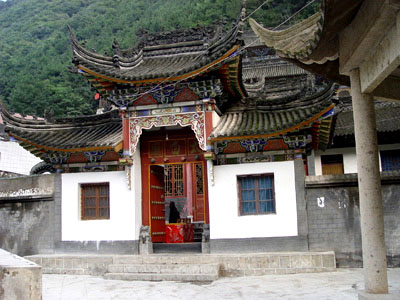 |
Taibai is known as a Taoist mountain; a prominent Taoist temple sits at its north foot. The area is rich in flora and fauna, thanks to the fact that it is not as well traveled as the other five sacred mountains of China. In fact Taibai Mountain National Forest Park boasts more than 2,000 species of plants and over 270 species of animals. Rare plant and animal species exist here, such as Katsura trees, Chinese Larches, Giant Pandas, takins and leopards.
The journey up the mountain enchanted us. Many magical spots on the path to the peak, with names such as Peach Blossom Land and Ink Splashed Mountain, garnered our attention and awe.
Taibai Mountain has a few remaining traces of roadways built during ancient China's Three Kingdoms Period (220-280). They are in disuse and decayed yet quite amazing for modern tourists to view because they were built by constructing wood plank bridges directly into the side of the mountain.
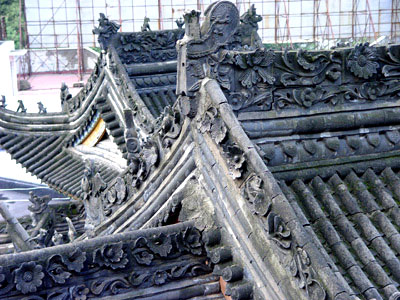 |
Historically, Taibai Mountain has received recognition from many emperors ruling during past dynasties. Throughout Chinese generations rulers and artists have acknowledged the mountain via abundant cultural relics, poetry and folklore. Many Chinese ancient poets, including the two most prominent writers of the Tang Dynasty (618 - 907), Li Bai, and Du Fu, as well as Su Shi, a famous poet of Northern Song Dynasty (960 - 1127), traveled to Taibai Mountain and wrote some notable poems. The park also abounds in ancient architecture, including 14 temple sites, 32 ancient houses, 5 stone steles, 10 iron tablets, over 110 iron Buddhist statues, 64 woodcarvings and several iron bells and furnaces.
Near the summit basic accommodations are available. Some budget hotels provided rather damp duvets but no hot water after 12 PM. Nevertheless, the view in the morning was worth it. Sunrise at the summit is truly a spectacular sight.
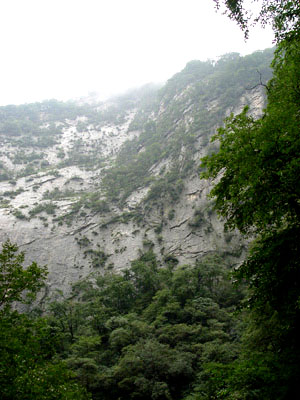 |
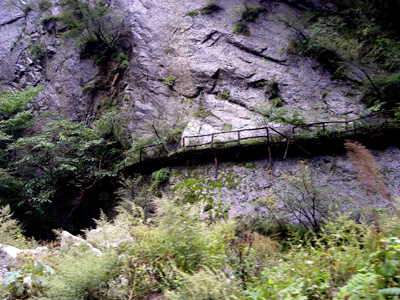 |
Travel info:
Admission fee: 70 yuan from April 1-October 31; 50 yuan from November 1-March 31
Taibai Taoist Temple: 3 yuan per person
Cable car: 60 yuan (round-trip); 35 yuan (one way)
Hours of Operation: 08:00-19:00
Transportation: Tourist Bus No.2;
Xi'an-Taibai Mountain Special Line located at the east square of the Xi'an Railway Station (7:30-16:00): 18 yuan;
Tangyu Kou-Xiaban Temple minibus (inside the park): 30 yuan (round trip); 15 yuan (one-way)
(China.org.cn by staff reporter Wang Zhiyong in Shaanxi, September 4, 2007)